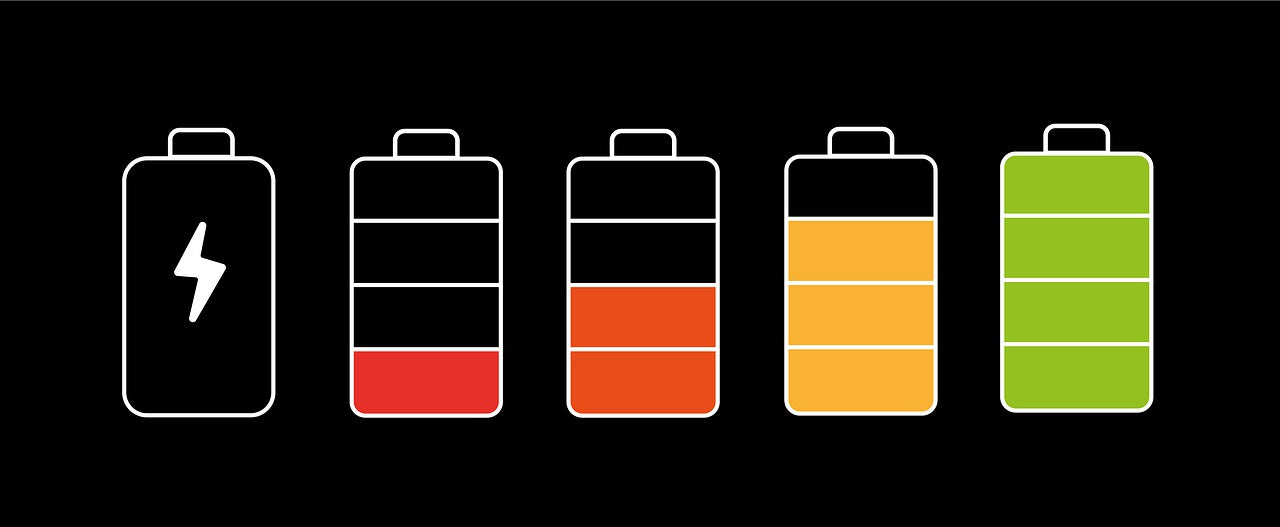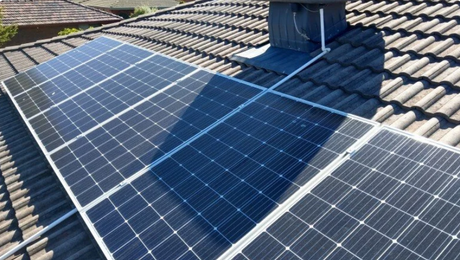What’s your car without a proper functional battery? Your vehicle will not even start without a battery, usually a 12V battery for most modern cars. Why does the battery’s voltage matter? The car battery voltage helps us to understand the amount of power it holds to run the engine and other electrical components in the car. Different car batteries have varying voltage levels, and it is crucial for every car owner to understand the battery they are using. This all-inclusive guide presents various car battery voltage charts for different battery types, including LiFePO4, AGM, Lead-Acid, and Deep-cycle.
What is Battery Voltage?
Car battery voltage refers to the electrical difference between the positive and negative terminals. It shows the amount of energy present to crank the engine and provide power to other electrical components in the car. There are several battery types, each with varying voltage levels depending on the chemical composition.
Most modern cars run on 12-volt batteries. However, electric vehicles (EVs) have high-voltage battery systems ranging between 400V and 800V, depending on the model. The optimal voltage ensures the battery can deliver enough power to ignite the engine. When the car engine is not running, the battery can provide a voltage ranging from 12.4V to 12.7 under normal circumstances. If the battery falls below 12.4V, it’s an indication that it is slowly dying or not fully charged. When the car engine is turned on, the normal operational voltage range is 13.7 Volts to 14.7 Volts while being charged by the alternator.

Car Battery Voltage Chart
A battery is the powerhouse for every car, powering the engine and the electrical system. Various types of vehicles have distinct battery specifications to enable them to meet their operational requirements. For instance, some cars only require 12V batteries for starting and lighting. Others, such as EVs, require 400V or more to support propulsion. Car batteries work at different voltages depending on the type of car and the electrical system.
The following car battery voltage chart demonstrates various car battery types and voltages.
| 12V Lead-Acid | 12V AGM | 12V LiFePO4 | State of Charge |
| 12.7 | 12.8+ | 14.4 | 100% |
| 12.5 | 12.7 | 13.4 | 90% |
| 12.42 | 12.5 | 13.3 | 80% |
| 12.32 | 12.35 | 13.2 | 70% |
| 12.2 | 12.15 | 13.1 | 60% |
| 12.06 | 12.05 | 13.05 | 50% |
| 11.09 | 11.95 | 13 | 40% |
| 11.75 | 11.81 | 12.9 | 30% |
| 11.58 | 11.66 | 12.8 | 20% |
| 11.31 | 11.51 | 12.0 | 10% |
| 10.5 | 10.5 | 10 | 0% |
LiFePO4 Battery Voltage Chart
Lithium iron phosphate batteries have overtaken all other battery types in popularity due to their safety, longevity, and fast charging rate. Their high depth of discharge enables them to perform optimally even under extreme temperatures.
The LiFePO4 Battery Voltage chart below shows the State of Charge (SoC) for various voltages, i.e., 12V, 24V & 48V.
| Capacity | 12V | 24V | 48V |
| 100%-Charging | 14.6V | 29.2V | 58.4V |
| 100%-Resting | 13.6V | 27.2V | 54.4V |
| 99% | 13.4V | 26.8V | 53.6V |
| 90% | 13.3V | 26.6V | 53.2V |
| 70% | 13.2V | 26.4V | 52.8V |
| 40% | 13.1V | 26.2V | 52.4V |
| 30% | 13.0V | 26.0V | 52.0V |
| 20% | 12.9V | 25.8V | 51.6V |
| 17% | 12.8V | 25.6V | 51.2V |
| 14% | 12.5V | 25.0V | 50.0V |
| 9% | 12.0V | 24.0V | 48.0V |
| 0% | 10.0V | 20.0V | 40.0V |
Renogy Core Mini 12.8V 100Ah Lithium Iron Phosphate Battery—the Group 22NF form factor champion that maintains 13.2-13.4V nominal voltage even when space is tighter than a fishing kayak's storage. Its intelligent low-temperature cutoff activates at 32°F (0°C), preventing dangerous voltage drops below 12V during cold cranking attempts, while the 300A Battery Shunt compatibility lets you monitor voltage fluctuations in real-time via Bluetooth—crucial when running trolling motors that demand steady 12.8V+ input.
Lead-Acid Deep Cycle Battery Voltage Chart
The voltage of lead-acid batteries varies depending on factors such as battery type, e.g., flooded or sealed, discharge rate, and temperature. Sealed lead-acid batteries are low maintenance and require minimal ventilation, unlike flooded lead-acid batteries, which need more maintenance and ventilation.
Lead-acid batteries have been used for decades due to their affordability and availability. They sufficiently deliver large bursts of energy required for cranking the engine. However, they have a short life span and low energy density compared to other battery types.
| Capacity | 6V Sealed Lead-Acid Battery | 6V Flooded Lead-Acid Battery |
| 100% | 6.44V | 6.32V |
| 90% | 6.39V | 6.26V |
| 80% | 6.33V | 6.20V |
| 70% | 6.26V | 6.15V |
| 60% | 6.20V | 6.09V |
| 50% | 6.11V | 6.03V |
| 40% | 6.05V | 5.98V |
| 30% | 5.98V | 5.94V |
| 20% | 5.90V | 5.88V |
| 10% | 5.85V | 5.82V |
| 0% | 5.81V | 5.79V |
Lithium-Ion Battery Voltage Chart
Lithium-ion batteries are commonly used to power handheld devices and modern electronics. Also, they are used in solar systems and power stations, although LiFePO4 is overtaking them. They perform better and have enhanced safety features than traditional lead-acid batteries. The voltage sizes for Li-ion batteries are 12V, 24V, and 48V.
| Capacity | 1 Cell | 12V | 24V | 48V |
| 100% | 3.40 | 13.6 | 27.2 | 54.4 |
| 90% | 3.35 | 13.4 | 26.8 | 53.6 |
| 80% | 3.32 | 13.3 | 26.6 | 53.1 |
| 70% | 3.30 | 13.2 | 26.4 | 52.8 |
| 60% | 3.27 | 13.1 | 26.1 | 52.3 |
| 50% | 3.26 | 13.0 | 26.0 | 52.2 |
| 40% | 3.25 | 13.0 | 26.0 | 52.0 |
| 30% | 3.22 | 12.9 | 25.8 | 52.5 |
| 20% | 3.20 | 12.8 | 25.6 | 51.2 |
| 10% | 3.00 | 12.0 | 24.0 | 48.0 |
| 0 | 2.50 | 10.0 | 20.0 | 40.0 |
The Renogy 12V 200Ah Pro Smart Lithium Battery redefines voltage stability with its Winter Guard Mode™. While traditional batteries struggle below freezing, this unit automatically activates its self-heating system at -20°C (-4°F) to maintain optimal 14.4V charging voltage - crucial for preventing the 30-50% voltage drop typical in cold starts. Through Bluetooth connectivity with the DC Home App, users gain real-time tracking of individual cell voltages, particularly valuable for RV owners needing to sustain critical 12.6V+ systems.
Deep Cycle Battery Voltage Chart
Deep cycle batteries provide steady power for extended periods. They discharge steadily up to a low SoC and then recharge again. They are suitable for applications requiring consistent energy output, such as EVs and solar energy systems. They require minimal maintenance and have a longer life cycle than FLA batteries.
The following is the deep cycle battery chart for 12V, 24V, and 48V.
| Capacity | 12V | 24V | 48V |
| 100% (Charging) | 13.00V | 26.00V | 52.00V |
| 99% | 12.80V | 25.75V | 51.45V |
| 90% | 12.75V | 25.55V | 51.10V |
| 80% | 12.50V | 25.00V | 50.00V |
| 70% | 12.30V | 24.60V | 49.20V |
| 60% | 12.15V | 24.30V | 48.60V |
| 50% | 12.05V | 24.10V | 48.20V |
| 40% | 11.95V | 23.90V | 47.80V |
| 30% | 11.81V | 23.62V | 47.24V |
| 20% | 11.66V | 23.32V | 46.64V |
| 10% | 11.51V | 23.02V | 46.04V |
| 0% | 10.50V | 21.00V | 42.00V |
Does the Cold Weather Kill Your Car Battery?
Not necessarily. However, car battery failure is more prevalent during winter. During cold seasons, the car’s battery performance and capacity drop to 30 up to 60%.
Batteries rely on chemical reactions from within to generate power for your car’s engine and electrical system. The chemical reaction is sensitive to extreme temperatures. Freezing temperatures slow down and can stop the reaction. Low temperatures minimize the kinetic activity within the battery.
However, proper maintenance, regular checkups, and good charging practices during cold weather will keep your battery running optimally throughout winter.
Voltage and Charging Systems
Battery voltage can impact charging systems. Higher-voltage batteries provide an avenue for efficient power delivery and charge faster because minimal current is needed for a similar amount of power.
Discuss The Role of Alternators and Voltage Regulators in Maintaining Proper Voltage
The alternator charges the battery as you drive your car. Also, it transmits electricity to the car’s electric system. It monitors and converts the engine’s mechanical energy into electrical energy, thus keeping the voltage within the required range. If the alternator malfunctions, it causes overheating and a decrease in voltage, which is harmful to the health of your battery.
The voltage regulator supports the alternator in maintaining proper voltage. It ensures a stable electrical output while safeguarding the car’s electrical system. The regulator provides the alternator that generates the correct voltage to power the electrical components.
Voltage regulators help maintain stable electrical output and protect the electrical system from voltage spikes and overcharging. They regulate the voltage, compensate for temperature variations, detect faults, prevent undercharging and overcharging, and ensure the optimal performance and longevity of the alternator. Generally, the regulator provides the reliability of your vehicle's electrical system.
Relationship Between Charging Voltage and Battery Health
To maintain optimal battery health, you must understand the relationship between the charging voltage and battery well-being and performance. Overcharging or deep discharging of the battery will cause faster degradation.
The battery charging voltage and the charging devices significantly determine a battery's health, performance, and longevity. The charging voltage varies depending on the battery type. For instance, the charging voltage for lithium-ion batteries is 3.6 to 4.2 volts, while the lead-acid battery's is 2.25 to 2.45 volts.
The following is a charging voltage chart for 12V Lithium-ion and LiFePO4 batteries.
| State of charge | Lithium-ion Voltage | LiFePO4 Voltage | Charging Current |
| 0% | 10.0V | 11.0V | Constant current: 20A Max |
| 10% | 11.1V | 12.0V | Constant current: 20A Max |
| 20% | 11.6V | 12.4V | Constant Current: 20A Max |
| 30% | 12.0V | 12.8V | Constant current: 20A Max |
| 40% | 12.3V | 13.0V | Constant voltage: 10-15A Tapering |
| 50% | 12.6V | 13.2V | Constant voltage: 5-10A Tapering |
| 60% | 12.9V | 13.4V | Constant Voltage: 2-5A Tapering |
| 70% | 13.2V | 13.6V | Constant Voltage: 1-2A Tapering |
| 80% | 13.5V | 13.8V | Constant Voltage: 0.5-1A Tapering |
| 90% | 13.8V | 14.0V | Constant Voltage: 0.1-0.5A Tapering |
| 100% | 14.0V-14.4V | 14.2V-14.4V | Float Voltage: 0.05A or Less |
Final Thoughts
Understanding the car battery voltage chart lets you know your battery’s usability, performance, safety, and lifespan. Understanding the voltage characteristics of various types of batteries helps you choose the correct car battery and ensures safe operation. Knowledge of voltage charts is indispensable for any car owner keen to uphold battery safety. Renogy car batteries are multifunctional and require minimal maintenance.
FAQs About Car Battery Voltage Chart
1. What are the signs of low voltage car battery?
Some indications of a low-voltage car battery are dimming headlights, problems starting the engine, and an inability to power electric devices. Other telltale signs of a battery with voltage issues are the need for jumpstarts and electronic malfunction.
2. When is the battery considered damaged due to low voltage?
When a battery's voltage falls below the required threshold, it means the battery is damaged and needs replacement. If a 12V battery falls below 10.5V under a load, it’s a sign that the battery is obsolete and requires replacement. Consistent low voltage readings indicate that you need to replace the battery.









